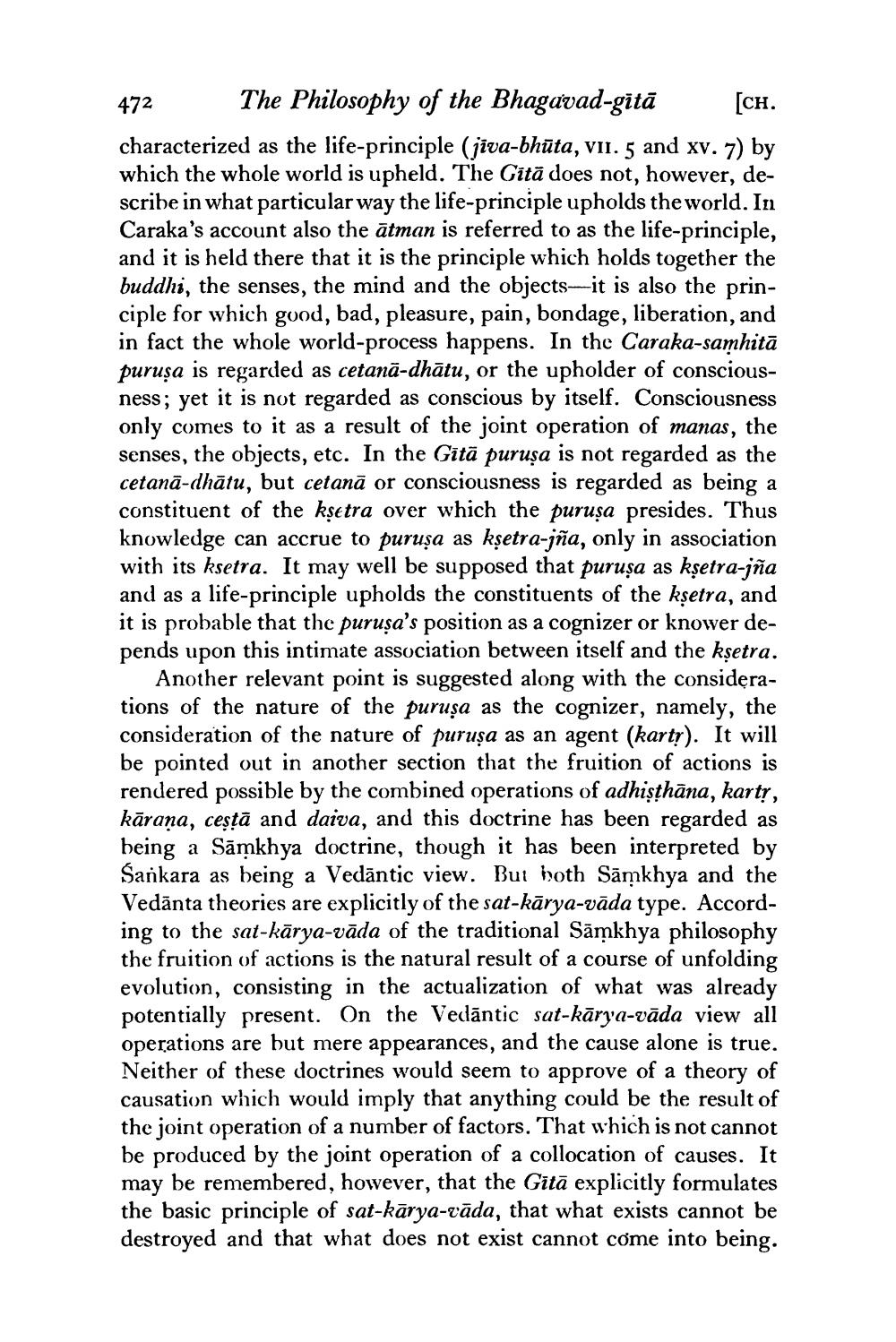________________
472
The Philosophy of the Bhagavad-gitā [cH. characterized as the life-principle (jīva-bhūta, vii. 5 and xv. 7) by which the whole world is upheld. The Gitā does not, however, describe in what particular way the life-principle upholds the world. In Caraka's account also the ātman is referred to as the life-principle, and it is held there that it is the principle which holds together the buddhi, the senses, the mind and the objects-it is also the principle for which good, bad, pleasure, pain, bondage, liberation, and in fact the whole world-process happens. In the Caraka-samhitā purusa is regarded as cetanā-dhātu, or the upholder of consciousness; yet it is not regarded as conscious by itself. Consciousness only comes to it as a result of the joint operation of manas, the senses, the objects, etc. In the Gītā puruşa is not regarded as the cetanā-dhātu, but cetanā or consciousness is regarded as being a constituent of the kşetra over which the purusa presides. Thus knowledge can accrue to puruşa as kşetra-jña, only in association with its ksetra. It may well be supposed that purusa as kşetra-jña and as a life-principle upholds the constituents of the kşetra, and it is probable that the puruşa's position as a cognizer or knower depends upon this intimate association between itself and the ksetra.
Another relevant point is suggested along with the considerations of the nature of the purușa as the cognizer, namely, the consideration of the nature of purușa as an agent (karty). It will be pointed out in another section that the fruition of actions is rendered possible by the combined operations of adhisthāna, karty, kāraṇa, cestā and daiva, and this doctrine has been regarded as being a Sāmkhya doctrine, though it has been interpreted by Sankara as being a Vedāntic view. But both Sāmkhya and the Vedānta theories are explicitly of the sat-kārya-vāda type. According to the sat-kārya-vāda of the traditional Sāmkhya philosophy the fruition of actions is the natural result of a course of unfolding evolution, consisting in the actualization of what was already potentially present. On the Vedāntic sat-kārya-vāda view all operations are but mere appearances, and the cause alone is true Neither of these doctrines would seem to approve of a theory of causation which would imply that anything could be the result of the joint operation of a number of factors. That which is not cannot be produced by the joint operation of a collocation of causes. It may be remembered, however, that the Gitā explicitly formulates the basic principle of sat-kārya-rāda, that what exists cannot be destroyed and that what does not exist cannot come into being.




